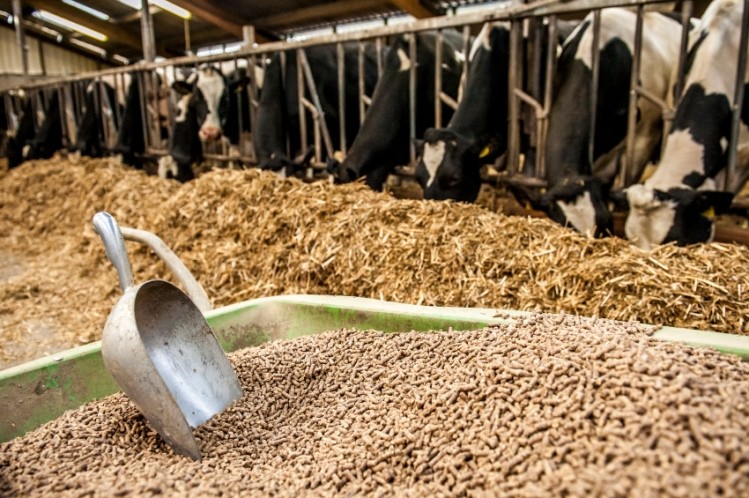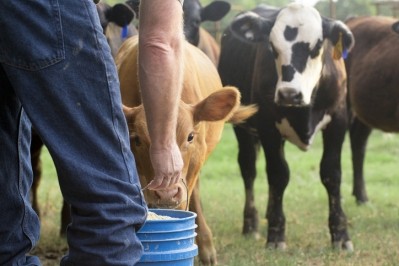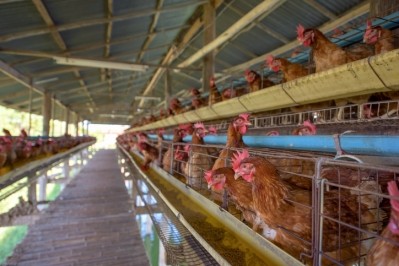USDA: As livestock producers expand, they buy rather than grow feed

The US Department of Agriculture’s (USDA) Economic Research Service released a report on trends in consolidation among farms producing livestock and feed and food crops earlier this month and presented a webinar on it yesterday [March 27].
In the past 30 years, farm consolidation has continued to shift toward larger farms, said James MacDonald, report co-author and chief of structure, technology and productivity branch of ERS.
The move is part of a much longer trend, but the process also has started to become more complicated - livestock producers have tended to stop growing their own feed and have started to buy it instead.
“For many of these farms, they may feel that they can purchase feed that is better tailored to their animals than they could produce on their own,” he told us during the presentation. “And it frees up their time to focus on their herd.”
Feed and crop production
“In 1987, half of all cropland was on farms that had 600 acres and that midpoint increases steadily over time,” he said.
By 2012, the midpoint slightly exceeds 1,200 acres as land is shifting toward larger farms, he added.
The number of farms that harvest 2,000 acres or more grew from 7,193 farms in 1987 to 30,158 by 2012.
There also was a trend toward steady consolidation for producers cultivating major feed crops including corn, soybeans and wheat, said MacDonald.
Consolidation, livestock and feed use
There also has been a trend toward consolidation for the production of several livestock species, said MacDonald.
“Consolidation in livestock is sometimes dramatic and much larger than what we see in crops, and it is also episodic – we see it happening in large chucks over 5-10-15 year periods,” he said. “Then we see no change in other periods so it is episodic rather than persistent over 25-30 years as we see in crops.”
One example of the type of consolation seen would be for dairy cows, he said. In 1987, the midpoint size of a dairy cow herd was 80 cows – meaning half of dairy herds were larger and half smaller.
“By 2012 the midpoint herd size in milk cows was 900 head,” said MacDonald. “This is a dramatic increase in milk cows.”
Similarly, the midpoint of layer flocks rose from 117,839 to nearly a million hens, he said. Hog production also had a “dramatic reorganization” that led to larger operations as did broilers, turkeys and feedlot cattle.
The one exception to this trend has been for beef cattle or cow-calf operations, he said. While other livestock production systems were consolidating, beef cow herd size went from a midpoint of 89 to 110.
“We saw no change in consolidation in pasture and rangeland, and the primary users are cattle,” he said “In a significant section of US agriculture the cow-calf sector, cattle stocking operations and pasture and rangeland we see no consolidation – we see it everywhere else.”
Along with the consolidation in animal production, there has been a trend toward producer specialization, he said. Increasingly animals come from farms that do not raise feed grains or make their own feed – favoring instead to purchase the feed they use.
“In many of these cases farmers gain from specialization,” MacDonald told us during the presentation. “On a number of dairy farms the people running the farm, even if they have their own crop land and feed is grown on the farm, the family in these examples tends to focus on running the milking operations, and they hire custom service providers to handle crop production – planting, spraying and harvesting – for them. So even though they operate the cropland they leave those decisions to someone else and they specialize on the livestock part of it.”
“[The shift] allows some producers to focus their investment of time, knowledge and effort on the livestock side,” he said. “That requires them to be able to have consistent, high-quality feed they can purchase.”
It also reflects the establishment of feed markets and the ability to transport feed across the country, he said. “As well as the realization by some producers, that their time is better spent focused on their animals than on also running a cropping enterprise.”










